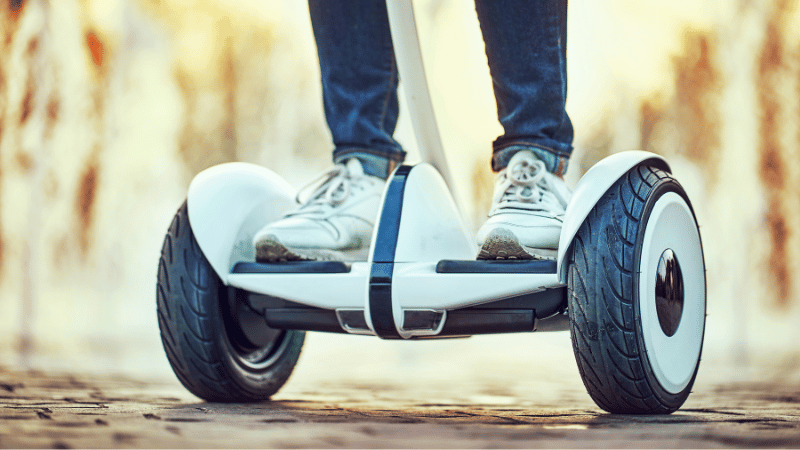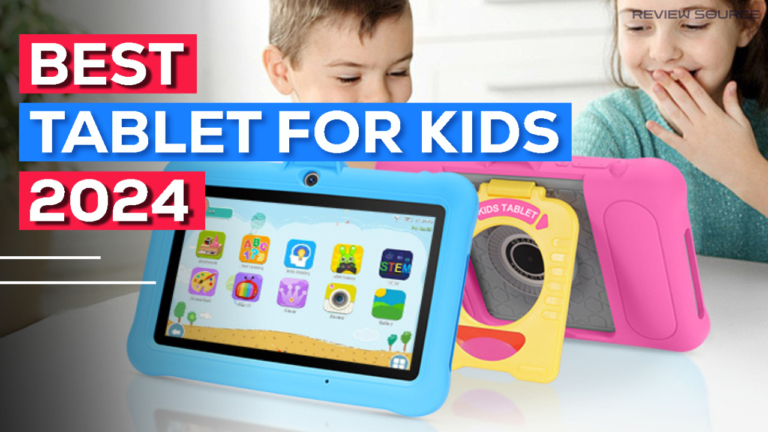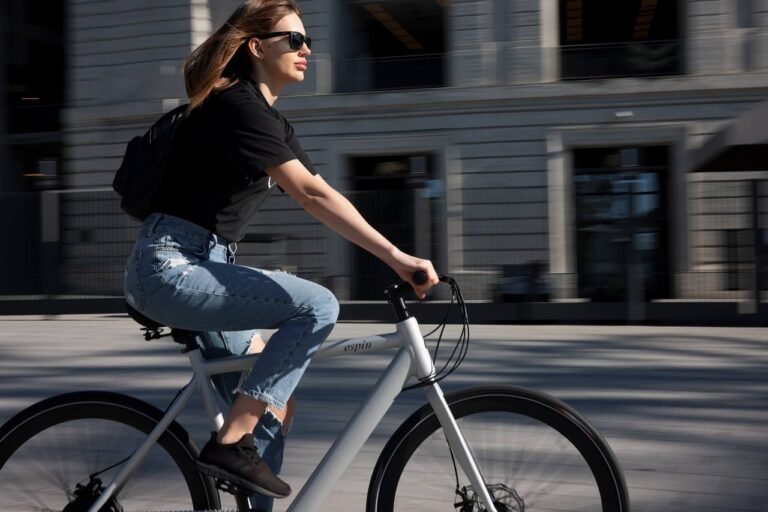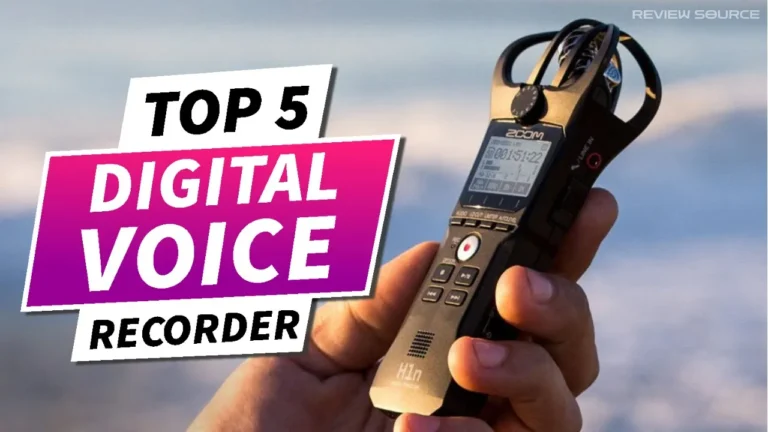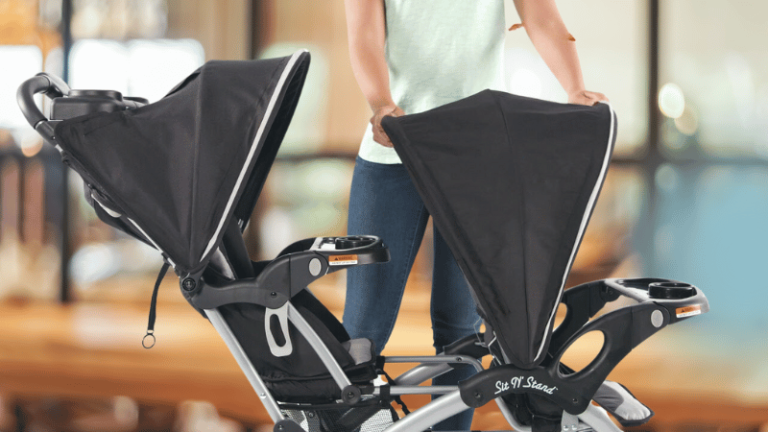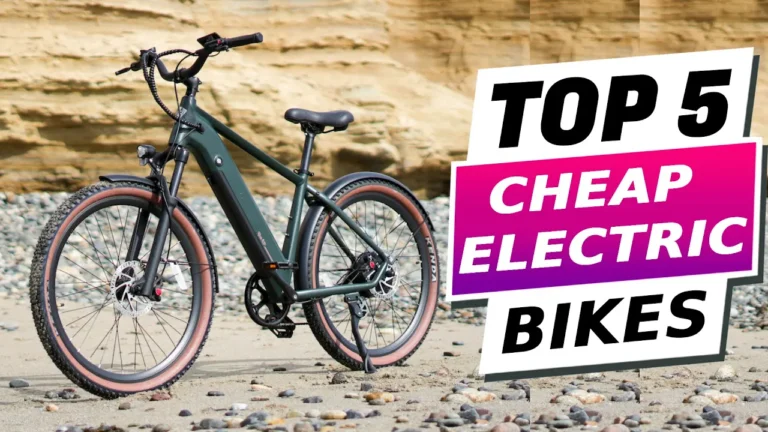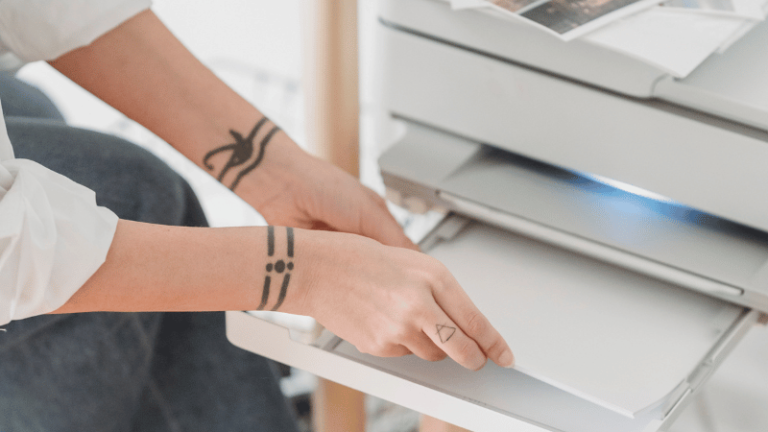What is a Hoverboard and How Does it Work: Types and Guides
Hoverboards have been a buzzword since they first rolled off the lines and into our social media feeds. They’re not just a hit among kids and teens but have found a niche with enthusiasts of all ages who love this innovative mode of personal transport. But what exactly is a hoverboard, and how do these futuristic-looking devices work? Let’s dive in and balance out the facts.
Table of Contents
What is a Hoverboard and How Does it Work

Many might recall the iconic hoverboard scene from a famous sci-fi movie and wonder if we’ve finally reached the future. Though not exactly the levitating skateboards from “Back to the Future,” today’s hoverboards still offer a gliding experience that feels like science fiction made real. Their growing popularity raises curiosity and questions about their operation and safety. Here’s everything you need to know about hoverboards.
What is a Hoverboard?
Imagine a compact board with two wheels that carries you effortlessly along sidewalks and paths – that’s your hoverboard. Officially known as self-balancing scooters, these battery-operated boards make use of some nifty technology to create a smooth and engaging ride. They typically consist of a platform for the rider situated between two wheels, powered by large lithium-ion batteries.
How Does a Hoverboard Work?
The science behind hoverboards is all about self-balancing, a trick achieved through a careful orchestration of gyroscopes, sensors, and a control system.
- Gyroscope and Sensors: The mind of the hoverboard lies in its gyroscope and sensors. They detect the tilt and speed of the board, relaying this data to the control board.
- Control System: Imagine the control system as the hoverboard’s decision-maker. It processes the data from the sensors and makes adjustments to keep the hoverboard balanced, controlling the speed and the angle of the wheels for a smooth operation.
- Motion: Riders control their movement by subtly shifting their weight. Leaning forward or backward instructs the hoverboard to move in that direction—the nuances in balance control speed and turning.
Types of Hoverboard
Hoverboards, also known as self-balancing scooters or electric scooters, come in various types and models. The classification can be based on features, design, and functionalities. Here are some common types:
- Basic Hoverboards: These are standard self-balancing scooters with basic features like LED lights, Bluetooth speakers, and simple navigation controls.
- Off-Road Hoverboards: Designed with larger, more rugged tires, off-road hoverboards are suitable for rough terrains like grass, gravel, and dirt. They often have a sturdier build to withstand outdoor conditions.
- App-Enabled Hoverboards: Some hoverboards can be connected to a mobile app via Bluetooth, allowing users to control features like speed, LED lights, and even track the scooter’s location.
- Hoverboard with Handles: Some models come with a handlebar for added stability, making them more akin to electric scooters. These are often preferred by beginners or those looking for a handle for balance.
- Hoverboard with Built-in Seat: These hoverboards have a seat attachment, turning them into a seated electric scooter. They provide a more comfortable riding experience for longer journeys.
- Hoverboard with UL Certification: UL (Underwriters Laboratories) certification ensures that the hoverboard has met safety standards. UL-certified hoverboards are tested for electrical and fire safety.
- Hoverboard with Swappable Batteries: Some advanced models allow users to swap out the battery, providing the convenience of extended use without waiting for the battery to recharge.
- Foldable Hoverboards: Designed for portability, foldable hoverboards can be folded down for easier carrying and storage, making them convenient for commuters.
It’s important to note that the availability and features of hoverboards can vary by brand and model, so it’s recommended to research and choose one based on individual preferences and needs. Additionally, always prioritize safety features and adhere to local regulations when using hoverboards.
Safety Considerations
As with any form of transport, safety is paramount when it comes to hoverboarding.
- Safe Riding Tips: Always ride at a manageable speed, and be aware of your surroundings. Avoid water and steep inclines.
- Protective Gear: Wearing a helmet should be non-negotiable, and additional gear like wrist guards, knee pads, and elbow pads are strongly recommended.
Choosing the Right Hoverboard
Not all hoverboards are created equal, and choosing the right one can enhance your riding experience.
- Factors for Buying: Look for hoverboards with robust battery life, suitable wheel size for your terrain, and reliable customer reviews.
- Brands and Models: Brands like Swagtron, Razor, and Segway offer diverse models that cater to different preferences and price points.
Read: Best Cheap Hoverboard in 2024: A Comprehensive Guide
Maintenance and Care
Keeping your hoverboard in tip-top shape ensures its longevity and your ongoing enjoyment.
- Maintenance Tips: Store your hoverboard in a cool, dry place, and keep it clean from dirt and debris.
- Charging Instructions: Use only the charger that comes with your hoverboard, and never overcharge the battery, which can shorten its lifespan.
Conclusion
Hoverboarding has brought a touch of the future to our everyday lives, combining advanced technology with the pure thrill of gliding effortlessly. And while their name might suggest otherwise, hoverboards keep us firmly grounded in an exciting new way to move.
Always remember to ride safely, respect proper maintenance, and choose the right hoverboard for your lifestyle for an unparalleled experience. With the power of self-balancing technology, your next adventure is just a lean away. Happy riding!
Frequently Asked Questions (FAQs) – Hoverboards
how long does a hoverboard take to charge?
The charging time for a hoverboard varies depending on the model and battery size. On average, it takes around 2-3 hours for a full charge. However, it is essential to follow the manufacturer’s instructions and never overcharge the battery to ensure its longevity. Always use the charger that comes with your hoverboard to prevent any potential safety hazards.
How do you know when your hoverboard is fully charged?
Most hoverboards come with an indicator light that turns green when the battery is fully charged. Some models also have a beeping sound to signal a full charge.
What is the average range of a hoverboard on a single charge?
The range of a hoverboard varies depending on factors like battery capacity, rider weight, terrain, and speed. On average, most hoverboards have a range of 10 to 15 miles on a single charge.
Are hoverboards water resistant?
Most hoverboards are not designed to be water-resistant or waterproof. It is advisable to avoid using them in wet or rainy conditions to prevent damage to the electrical components.
Can children use hoverboards?
Hoverboards are generally suitable for older children and teenagers. It’s important to check the manufacturer’s recommendations regarding age and weight restrictions. Younger riders should be supervised, and safety precautions should be strictly followed.
Are hoverboards allowed in public spaces and on the road?
Regulations regarding hoverboard usage vary by location. In many places, hoverboards are considered personal transportation devices and may be subject to similar rules as bicycles or pedestrians. Always check and adhere to local regulations before riding in public spaces or on the road.
What safety precautions should I take when using a hoverboard?
Always wear appropriate safety gear, follow local traffic regulations, and be mindful of your surroundings. Start at a slow speed if you are a beginner, and avoid using the hoverboard in crowded or busy areas.

